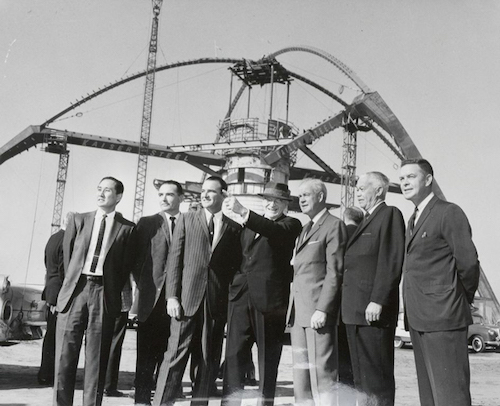Communiqué
A life that could have been dreamed up by a screenwriter: “Hollywood’s Architect: The Paul R. Williams Story” – Oct. 22 at 9 pm
< < Back to a-life-that-could-have-been-dreamed-up-by-a-screenwriter-hollywoods-architect-the-paul-r-williams-story-oct-22-at-9-pmHollywood’s Architect: The Paul R. Williams Story
Saturday, October 22 at 9 pm
Born in Los Angeles in 1894, Paul R. Williams was orphaned by the age of four after both parents died of tuberculosis. He was raised by a strict but loving foster mother who encouraged his artistic talent and taught him the value of hard work.

Williams excelled in predominantly white schools, but got no support when he expressed an interest in architecture. Williams said he never forgot the astonished rebuke from one teacher who exclaimed, “Whoever heard of a Negro architect!” Ignoring this, Williams set about preparing himself to follow his dream. He combined architectural engineering courses at the University of Southern California with art classes and training in landscape design. Then he got practical experience from a series of apprenticeships with some of the city’s top architectural firms.
In a career that spanned more than 50 years, Paul Williams was known not only for excellence, but dazzling versatility as well. His portfolio included luxury mansions and hotels, restaurants, office buildings, retail stores, schools, churches, public housing, and a children’s hospital. His designs for the homes of Hollywood elite like Frank Sinatra, Cary Grant, Humphrey Bogart, William Holden, Danny Thomas and Lucille Ball and Desi Arnaz earned him the nickname “Architect to the Stars.” But he was equally at home working on top commercial and public commissions like the Beverly Hills Hotel, the Beverly Hills Saks Fifth Avenue store and LAX International Airport. Despite his professional success, Williams’ personal life was constricted by the racism of the day. He and his wife and two daughters could not live in many of the neighborhoods where he built homes, and he wasn’t always welcome in the restaurants and hotels he had designed— unless he was with a white client. He chose to rise above this, focusing instead on doing work of the highest quality and opening doors for others.
By the time he retired in 1973, Paul Williams had become one of the most successful architects of his time, and he had created a body of work that helped define the landscape of Southern California.

